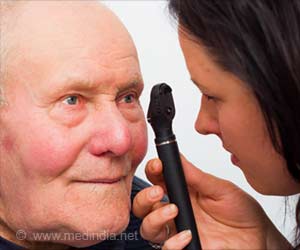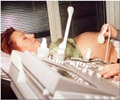A new approach to cure diabetic retinopathy has been found, receptors called as adenosine receptors A2a have been targeted
Highlights
- A new approach to treat diabetic retinopathy has been found, receptors called as adenosine receptors A2a have been targeted
- These receptors can reduce the development of dysfunctional blood vessels in the eye
- Targetting of adenosine receptor A2a can lead to decreased breakdown of glucose
- Reduction in Glucose breakdown may lead to lesser blood vessel development.
An inhibitor of adenosine receptor A2a already is in clinical trials for Parkinson’s disease.
Adenosine is a natural structural component of basic body essentials like DNA and RNA as well as the ubiquitous cell fuel ATP. It can help blood vessels expand, battle bad heart rhythms and even provide pain relief.
Its family of receptors includes adenosine receptor A2a, which is important for the retina and found on the endothelial cells that line blood vessels, says Huo, co-corresponding author of the study in the journal Nature Communications.
When oxygen levels are good, their expression is low in endothelial cells. But in diabetes, where oxygen levels go down, adenosine A2a receptor expression goes way up and a vicious cycle is born.
Expression of adenosine receptor A2a increases, apparently to enable endothelial cells to take up more glucose that can be converted to energy to help restore good oxygen and blood flow.
But in a scenario where the cells don’t use energy efficiently or build blood vessels well it’s called "pathological angiogenesis.
"Old and new blood vessels alike readily bleed or contract, leading to hemorrhage and retinal detachment and blindness, the scientists write.
"They grow too much, too fast," Huo says. It’s not yet clear whether it’s the high glucose levels of diabetes and the resulting inflammation or other factors that increase expression of adenosine receptor A2a. Huo notes that adenosine’s many actions include an anti-inflammatory effect.
But the work of Huo and his colleagues indicates that however, it happens adenosine receptor A2a’s higher profile role in this scenario makes it a likely treatment target.
A key problem appears to be that the receptor aids the inefficiency of endothelial cells. These cells generate about 85 percent of their fuel through glycolysis, a way to convert glucose to the cell fuel ATP without using oxygen.
Even with plenty of oxygen handy, endothelial cells appear to like this method. By comparison, cellular respiration, which requires oxygen, produces nearly 40 molecules of ATP per molecule of glucose versus only about two ATP molecules per glucose molecule with glycolysis.
When the scientists activate the receptor, it promotes the enzymes that promote glycolysis. Increased use of this inefficient energy production process of glycolysis has been shown to occur in endothelial cells in people with proliferative diabetic retinopathy.
Conversely, when the scientists knocked out or deleted adenosine receptor A2a from endothelial cells, it decreased glycolysis. Blocking glycolysis, in turn, dramatically inhibited blood vessel proliferation and sprouting of endothelial cells that overexpress the receptor.
When oxygen levels were more normal, knocking out or deleting adenosine receptor A2a didn’t seem to have that much impact on glycolysis, possibly because the receptor’s expression is not that high when oxygen levels are normal, the scientists suspect.
All the reciprocal cause and effect they found supports the new idea that the receptor promotes glycolysis, which promotes pathological angiogenesis in retinopathies, Huo says.
Much work remains. For example, they have not yet figured out the connection between the adenosine receptor A2a and VEGF receptors, but there has to be some synergy, Huo says, since as its name implies, vascular endothelial growth factor, or VEGF, also is clearly important to endothelial cell repair and new blood vessel formation.
In the right environment, adenosine A2a receptor has a positive role in blood vessel formation as well: activation of the receptor in a mouse model of wound healing shows increased activation of healthy angiogenesis that aids recovery.
His lab also wants to try in their animal models and human retinal tissue, the adenosine receptor A2a inhibitor showing success and safety in patients with Parkinson’s disease.
In Parkinson’s, expression of adenosine receptor A2a goes up in a part of the brain involved with the voluntary movement.
Inhibitors understudy for that degenerative condition appear to decrease uncontrolled movement and generally slow disease progression without significant side effects, Huo says.
It’s the safety and effectiveness in that condition combined with his findings in the retina, which have Huo planning to use existing inhibitors in his studies. He’s also working with co-corresponding author and chemist, Dr. Mei Hong, of the Drug Discovery Center, Key Laboratory of Chemical Genomics, Peking University Shenzhen Graduate School, to develop another adenosine receptor A2a inhibitor.
Endothelial cells likely opt to use glycolysis because, during development, many are formed in a hypoxic, or no oxygen, environment, Huo notes.
Many other cell types only turn to glycolysis when they are stressed. He adds that caffeine is a not-very-specific blocker of adenosine receptor A2a.
Nearly 10 percent of Americans have diabetes, according to the American Diabetes Association. Up to 45 percent of those individuals have some degree of diabetic retinopathy, according to the National Eye Institute.
The retina is inside the back of the eye, a multi-layered and vascular tissue, which receives light and transforms it to a neural impulse that goes to the brain.
The optic nerve that transmits the neural impulses is in the center of the retina, and the retina’s major blood vessels radiate from the optic nerve.
In addition to efforts to better manage blood glucose and blood pressure levels, current therapies for diabetic retinopathy include laser surgery to attempt to seal leaky blood vessels as well as surgery to remove the vitreous gel, blood, and scar tissue to better enable light to again focus on the retina.
Direct injections into the eye of steroids may help with swelling, and an anti-VEGF treatment may help reduce the growth of the leaky vessels.
Source-Eurekalert















